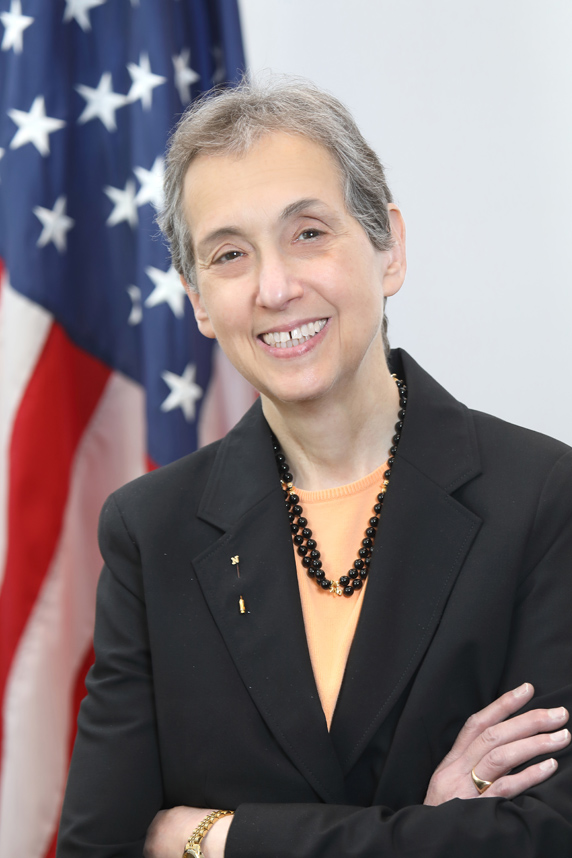October is Children’s Health Month
At NIEHS, Children’s Health Month is an opportunity to promote the importance of protecting children’s health from environmental hazards where they live, play, and learn.
Young children naturally, and appropriately, like to play on the floor or ground, and they often put things in their mouths. But behaviors like these may also bring them into closer contact with harmful contaminants. Children are more vulnerable to toxic effects because their brains and other organs are still developing.
Using a variety of approaches, NIEHS research addresses exposures to chemicals and circumstances during all stages of development, the prenatal period through puberty. Discoveries about how the environment affects children’s health, in turn, become a basis for ways to reduce or stop harmful exposures.
Learn more about what NIEHS is doing:
(CK)
Deputy Director for Intramural Research visits NIEHS

NIEHS welcomed Nina Schor, M.D., Ph.D., Deputy Director for Intramural Research of the National Institutes of Health to campus Aug. 22. During her visit, Schor met with lab leads, research core personnel, and trainees to learn more about the institute’s latest research advances. During a lecture, she also presented insights on her work to develop treatments for neuroblastomas, which are malignant tumors found in the sympathetic nervous system. Sprinkled throughout her talk, Schor offered career advice for junior NIEHS scientists.
“For those of you that are embarking on your scientific journeys, I would advise you to take the time to smell a few roses along the way,” said Schor. “As much as I love talking about science, I am prouder of all the people that have gone through my labs and have gone on to do better than I could have done myself.” (ST)
Forum showcases new approaches to identify carcinogens
New cell-based and computational methods to identify potential carcinogens headlined a recent forum hosted by the National Toxicology Program (NTP). The forum’s goal was to connect federal regulatory and research agencies that use or generate data and information on chemical safety with innovators developing approaches to reduce or replace animal use.
The methods described in the 10 presentations varied in both the approaches they used for identifying chemicals that could cause cancer and the types of chemical effects they could characterize.
“We’re pleased to provide an opportunity for method developers with similar interests to share their work and learn from each other, and to increase awareness among federal partners on the availability of new approaches,” said Nicole Kleinstreuer, Ph.D., who directs the NTP Interagency Center for the Evaluation of Alternative Toxicological Methods. The center hosted the forum on behalf of the Interagency Coordinating Committee on the Validation of Alternative Methods.
To learn more about the Aug. 20-21 forum and to view slides and video, visit the National Toxicology Program website. (CS)
DREAM Challenge winners announced
On Sept. 1, NIEHS announced the winners of the Personalized Environment and Genes Study (PEGS) DREAM Challenge. PEGS integrates genetic and environmental data to understand disease etiology, identify risk factors, and improve disease prevention. The winning teams listed below successfully analyzed data from PEGS to classify individual high cholesterol disease status and design hypotheses that go beyond known risk factors for the disease.
Team name: Spider Bobs
Members: Ali Salehzadeh-Yazdi, Eda Cakir, Johannes Falk, Venetia Voutsa, Jyoti Jyoti, and Marc Hütt, Constructor University Bremen Germany, School of Science, Life Sciences & Chemistry.
To identify factors driving high cholesterol, the team built a model with a Gradient Boosting Classification tree method using data from the PEGS surveys. By analyzing genomic and exposome data, the team identified links among high cholesterol, genotypes, and previous infectious disease status.
Team name: Nonsense-mediated decay
Members: Federico Marotta, Alessandro Lussana, European Molecular Biology Laboratory, European Bioinformatics Institute, Molecular Systems Biology Unit.
To identify gene-environment interactions, the team built a model with a random forest classifier method, using the PEGS survey data and polygenic risk scores. Taking advantage of the multi-dimensional data in PEGS, the team sought to advance the understanding of the heterogenous causes of high cholesterol.
The winning teams will present their work at the RSG/DREAM 2024 conference on Oct. 1 in Madison, Wisconsin. (ST)
(Carol Kelly is managing editor and Sam Tyler is a technical writer-editor in the NIEHS Office of Communications and Public Liaison. Catherine Sprankle is a communications specialist for Inotiv, the contractor supporting NICEATM.)
Source link
factor.niehs.nih.gov

